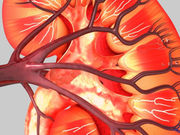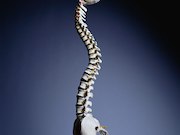Early Post-Op APAP Exposure May Cut AKI Risk in Peds Cardiac Sx
Early acetaminophen exposure after pediatric cardiac surgery may reduce rate of acute kidney injury
Rate of Deaths From Falls in Seniors Up From 2007 to 2016
Rate increased in almost every demographic category; largest increase for those aged ≥85 years
Hemorrhage Control Training Is Beneficial for Laypersons
Overall, 54.5 percent could correctly apply tourniquet in assessment three to nine months after training
Restricting Fluids Post Abdominal Surgery Doesn’t Up Survival
Fluid restriction has no impact on disability-free survival; increases risk of acute kidney injury
Vertebroplasty Does Not Up Pain Relief in Osteoporotic Fracture
No more pain relief than sham procedure for patients with acute osteoporotic vertebral compression fx
Surgery for Hip Fx Cuts Mortality in NH Residents With Dementia
Less pain, fewer pressure ulcers for nursing home residents with dementia after surgical hip fx repair
Peds Fasting Duration Not Tied to Adverse Sedation Outcomes
Preprocedural fasting duration not linked to adverse events for children undergoing procedural sedation
Low Procedure Volume for Many Surgeons Doing Hysterectomies
Higher rates of complications and mortality, prolonged hospital stays more likely, for their patients
Crowdfunding Exaggerates Efficacy of Unproven Stem Cell Tx
Crowdfunding campaigns for unproven stem cell-based interventions underemphasize risks
Primary, Secondary Implant Equal for Fibula Free Tissue Transfer
Similar rate of complications for patients with fibula free tissue transfer for ORN and ON of the mandible



















